Bai Juyi › Balhae › Beer in Ancient Egypt » Origins and History
Articles and Definitions › Contents
- Bai Juyi › Who Was
- Balhae › Origins
- Beer in Ancient Egypt › Origins
Ancient civilizations › Historical places, and their characters
Bai Juyi › Who Was
Definition and Origins
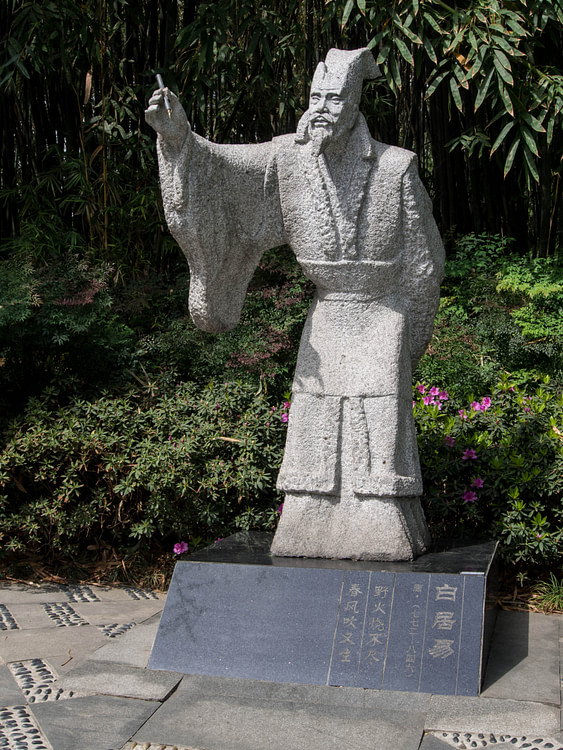
Bai Juyi (772-846 CE) was one of the greatest poets of the Tang Dynasty (618-907 CE) along with Li Po (701-762 CE) and Du Fu (712-770 CE). He was a government official who got in trouble with authorities a number of times for not following the rules or doing as his superiors thought he should. Bai Juyi could not be bothered to follow rules he felt were silly or illogical, though. He was a poet first and he followed his heart. Unlike Li Po, Bai Juyi is not very well known in the west but is very popular in China. He is best known for his poem Song of Everlasting Sorrow (also known as Abiding Remorse or Song of Everlasting Regret ) which became very popular when he published it in c. 806 CE and remains so today. In China, the poem is still required reading in school.
Bai Juyi's simple style of writing, known as Yuanhe, was accessible and appealing to the masses (though not so much to the critics) and because of this, and his habit of publishing and distributing his own work, most of his poems have survived the centuries and continue to be admired today.
EARLY LIFE
Bai Juyi was born in Xinsheng County near the modern day capital of Henan Province, Zhengzhou, in 772 CE. He came from a long line of scholars and government officials. His family was poor and struggled to make a living, but they made sure that Bai received an education. He was already writing poetry by the age of twelve when his family moved to another province because of political turmoil in their own.
At the age of sixteen, Bai traveled to Changan, the capital of the Tang Dynasty, to submit his poetry to a well-known poet named Gu Kuang. Gu was impressed by his work and recommended he take the Imperial Examination to work for the government. Many poets worked for the government because it was a steady job they could perform easily and it gave them time to write their poems. While Bai was studying for the exams, his father died and the family had no means of support. Bai rushed his studies hoping to secure a job to help his family but wound up failing the exam. He took the required three years of mourning for his father and exiled himself to his ancestral home on the Wei River just outside of Changan. He devoted himself to poetry, and it was during this time, c. 806 CE, that he wrote Song of Everlasting Sorrow. When his three years of mourning were up, he returned to Changan to take the exam which he passed at the age of 20.
He took a job as an archivist and became friends with other young poets who had recently passed the exam. One of these was Yuan Zhen (779-831 CE) the famous writer, poet, and scholar who would be Bai's closest friend. Yuan Zhen and Bai Juyi were both very outspoken and concerned with social injustice and political corruption. Even though they both worked for the government, they were not above criticizing officials they felt were abusing their positions. Yuan Zhen was more subtle in his writing and offered suggestions for improvement, but Bai Juyi expressed his feelings plainly in his poetry and this caused him problems more than once.
POETRY & EXILE
He wrote a poem called On Stopping the War in response to what he saw as needless conflict and criticized a number of officials who were of higher rank than he was. When the Prime Minister Wu Yuanheng was assassinated in 815 CE, Bai wrote a poem eulogizing him without waiting for those in higher positions to express their feelings first. This breach in protocol made him more enemies, who took the first chance they found to have him exiled.
Bai's mother died in 815 CE by falling down a well while looking at some flowers. Shortly after this, and prior to resigning his position to observe the three years of mourning, Bai published two poems, Admiring Flowers, and The New Well which his enemies claimed were violations of filial piety because he was using his mother's death for his own personal gain. Bai was found guilty, demoted, and exiled to the city of Xun Yang on the Yangtse River. Here he again devoted himself to poetry and, when his time of mourning and exile was over, visited Yuan Zhen (who was also in exile) at Yichang. Their time together exploring caves and drinking ale and wine by the river became the subject of a number of Bai's later poems and, together, they perfected the Yuanhe style of writing they are associated with.
GOVERNMENT WORK & FAME
In 819 CE Bai was called back to Changan to take a post as a government secretary. He held this position for a few years without any trouble, but in 821 CE he wrote a number of poems criticizing the emperor Muzong. The entire court of Muzong's administration was corrupt, and the emperor himself did nothing but drink all day and enjoy himself with his concubines. Bai Juyi's poems were not critical enough to warrant exile or more serious punishment but were still considered disrespectful. He was sent away from the court at Changan to Zhongzhou in Sichuan Province to take a minor position as Prefectural Governor.
BAI YUYI WROTE IN AN EASY STYLE WHICH PEOPLE COULD UNDERSTAND. ALTHOUGH THE PEOPLE LOVED HIS POETRY, MANY CRITICS DID NOT; FOR THE SAME REASONS.
By this time, Bai's poetry had become very popular. He wrote in an easy style which people could understand. It was said that he would read his poetry to his illiterate servants, and if there was a word or line which they did not understand immediately, he would simplify it. Although the people loved his poetry, many critics did not; and for the same reasons. The literary critics of the time felt his poetry was too sensuous and simple and aroused emotions rather than offering a harmonious experience. Bai paid no attention to them and continued to have his work printed and distributed to the public.
He was appointed governor of Hangzhou in 822 CE and acted in the people's interests without following protocol or seeking counsel from those of higher rank. The farmers who lived around the area known as West Lake depended on a steady water supply for their crops but, because the local officials had been corrupt, the dike which regulated the water had collapsed.When Bai arrived he saw the people were suffering every day because of the ruined dike and had it rebuilt so it was better than the one before. He also ordered a walkway built across it so the people would no longer have to pay the high prices of the local ferryman to cross the lake.
Bai spent his free time writing poetry and visiting Yuan Zhen who held a government position nearby. He had also been promoted to the position of Imperial Tutor which came with a significant salary. He was married by this time, although his wife's name is unknown. In 829 CE, his two-year-old son died and Yuan Zhen died soon afterwards in 831 CE. Bai's time as governor was up and he retired to an estate at Luoyang. At some point after his son's death and his retirement, his wife must have died because there is no mention of her afterwards.
RETIREMENT & DEATH
Bai Juyi had a great appreciation for nature and insisted that his estate should be mainly gardens. The scholar Charles Benn writes, "The residential quarters sat on only 18 percent of the property's nearly two and a half acres. The remainder of the tract was a garden with a lake (29 percent of the land) and an enormous bamboo grove (53 percent of the land)...After retiring from office, he set about the business of renovating his garden" (92). He built a granary which could store up to 1700 bushels of grain, a library for his huge collection of books, a pavillion for parties, and had three man-made mountains formed in his lake as a symbol of the land of the gods.
In the last years of his life, Bai entertained his friends and wrote poetry. He had his poems copied and distributed throughout the region. His two best known, Song of Everlasting Sorrow and Song of the Pipa Player were already famous and available in libraries and bookshops. His parties became major events which Benn describes:
Whenever he threw a party, he and his guests went for a sail on his pleasure boats. Trailing along behind the craft underneath the water were 110 waterproof sacks containing ale and roasted meat. Whenever the party exhausted the contents of one bag, the poet's attendants would retrieve another for the pleasure of his companions. Bai also had a troupe of ten singers, dancers, and musicians. When strumming of the zither was over and his guests were merrily drunk, he sent the entertainers to pavilions on the islands in the lake where they performed the introductory section of "Rainbow Skirt", a famous piece of music (92).
After his retirement from government, Bai referred to himself as a hermit but continued to entertain people and write poetry until he suffered a stroke in 839 CE. His poetry becomes more somber after this, and he had to stop entertaining guests. He died in 846 CE at the age of 75. He requested a simple grave near one of the nearby monasteries but was buried near the Longmen Caves, the famous grottoes of the hundred buddhas, and honored with a monument.
POETRY & LEGACY
Bai Juyi wrote almost 3,000 poems in his life most of which were preserved because they were so popular. He is known as the "People's Poet" of the Tang Dynasty because, unlike Li Po or Du Fu, his work was accessible to everyone and his subject matter dealt with topics which were considered outside of the Confucian principles of respectable poetry.
Scholar Rewi Alley, the translator of Bai Juyi's best-known works in English, writes:
Bai regretted not having written more poems on social issues and not having invested those he wrote with greater conviction. One suspects, however, that a number of Bai's and Yuan's poems of social criticism were dropped from their collected works by later compilers. In fact, most of Yuan's poems in this genre have been lost, though many folios of Bai Juyi's have come down to us. It is interesting to note, too, that whereas it had been the custom for outstanding poets to be granted a posthumous title, this honour was denied Bai by the emperor. This suggests that his socio-political poems had hit their mark after all (6).
Bai felt that the purpose of poetry, or any writing, was to promote social justice and understanding. Alley writes how he "held the conviction that the basic function of poetry was didactic - to inform the ruling class of the state of the people's lives" (6). He did not even consider his most famous poem, Song of Everlasting Sorrow, one of his best because it dealt with royalty and war instead of the working class and their struggles to live lives of dignity under corrupt governments.
Song of Everlasting Sorrow is a romanticized telling of the tragic love story of the Tang emperor Xuanzong (712-756 CE) and the Lady Yang. When the An Lushan Rebellion broke out during Xuanzong's reign, Lady Yang and her family were blamed.Xuanzong's military commanders refused to help put the rebellion down unless Yang and her family were executed, which was done. In the poem, this event is set back in the Han Dynasty (206 BCE-220 CE) to make it more romantic. The story is the same, though: the emperor must allow his true love to be killed in order to win the war. Even though the poem touches on many themes Bai regularly explored, it deals with more elevated characters and situations than those he felt were his best works.
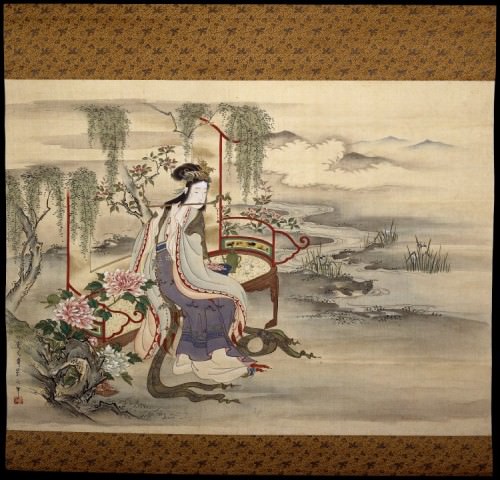
Lady Yang
Not all, or even that many, of Bai Juyi's poems are sad or heavy. His short poem On Reading the Works of Laozi is not only funny but raises an excellent point. The philosopher Laozi (also known as Lao-tzu ) is famous for the line, "Those who speak do not know; those who know do not speak." and yet is allegedly the author of the T ao Te Ching, a work of 5,000 words on Taoism. Bai Juyi says what plenty of people must have thought over the years in this poem:
I am told by Laozi
that those who talk know
nothing, while those with
real knowledge are silent;
people say that Laozi
really knew something; why then,
did he write those five thousand words?
His other poems are sometimes quiet descriptions of a scene or landscape, reflections on family and friends or starting a new job, word-pictures of the lives of the working class, or just observations on life. In his poem Haunted Houses he reflects on how silly people are to be afraid of homes which are haunted because "it is a man who creates/dangerous situations; a house of itself cannot"(Alley, 108). The people of Bai Juyi's time had a deep fear of ghosts and the problems they could cause the living.Bai Juyi was writing against tradition in criticizing the belief in ghosts and haunted places just as he went against custom in almost everything he did.
The poetic style created by Bai Juyi and shared with Yuan Zhen came to be known as Yuanhe which is a simple and direct way of writing which communicates instantly without a reliance on much symbolism or allusion. This style influenced all of the poets who came after him to different degrees and had a great impact on Japanese literature. The Tale of Genji by Lady Murasaki, Japan 's great classic novel, cites Bai Juyi's work a number of times and its style also matches his. Bai's greatest legacy, though, was not just in creating an important and influential style of poetry but in making it acceptable for poets to write about real life as they saw it instead of life as people wanted or wished it could be.
Balhae › Origins
Definition and Origins
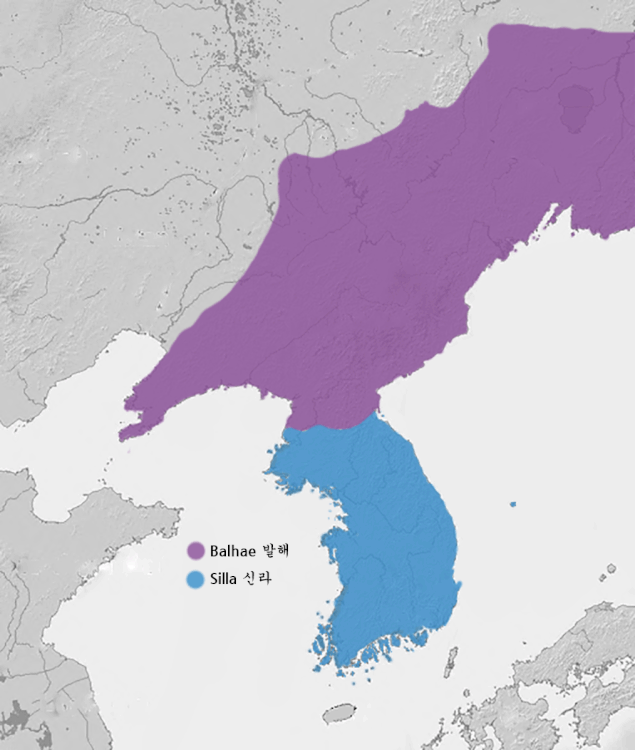
The Balhae ( Parhae ) kingdom in Manchuria (698-926 CE) was an important regional power which interacted both peacefully and otherwise with its neighbours the Unified Silla Kingdom of Korea and Tang China. The latter was a strong cultural influence, and Japan, too, was a staunch ally. The kingdom claimed to be the cultural successors to the earlier Goguryeo ( Koguryo ) kingdom of northern Korea and Balhae prospered for two centuries thanks to its rich agricultural lands and thriving trade relations. The kingdom collapsed in the early 10th century CE when it was attacked and conquered by the Mongolian Khitan tribe.
FOUNDATION & EXPANSION
The kingdom was founded in 698 CE by Dae Jo-yeong (Tae Choyong), a general of the semi-nomadic Malgal (Mohe) tribe of eastern Manchuria. The population was originally formed by exiles from the old Goguryeo kingdom (37 BCE – 668 CE) of northern Korea, which had been overtaken by the Silla kingdom, and members of the Malgal along with other groups like the Wuji, Khitan, and Eastern Turks. Dae Jo-yeong made himself king with the new name of King Ko and reigned until 719 CE.
The state was named Balhae in 706 CE, after the sea around the Liaodong and Shandong peninsulas, with various citiesacting as the state capital during the first half of the 8th century CE until the Supreme Capital (Shangjing/Sanggyong) was established in 755 CE near the Hurkha River. Shangjing had impressive fortification walls and large palaces which had the Korean ondol system of underfloor heating and decorative roof tiles. There were four other secondary capitals, 15 lesser towns ( pu ) below these, and then a lower level of villages ruled by local headmen who reported to the various upper levels of centralised government which largely copied the Tang model. Five important roadways helped unify the kingdom.
BALHAE WAS SQUEEZED BETWEEN TWO POWERFUL NEIGHBOURS, THE UNIFIED SILLA KINGDOM & CHINA, BUT THIS DID NOT PREVENT IT FROM PURSUING A VIGOROUSLY INDEPENDENT FOREIGN POLICY.
The Yunghung and Daedong (Taedong) Rivers formed the border with Balhae's southern neighbour, the Unified Silla Kingdom of Korea. The period of these two nations is sometimes referred to as the North-South division ( Nambuk sidae ) or Era of the Two States. However, due to the fact that the Balhae territory largely covered lands outside of Korea (Manchuria and Siberia) and that its population was largely composed of various ethnic groups with only the elite claiming descent from historical Goguryeo, most scholars do not consider it a Korean state proper.
Balhae was squeezed between two powerful neighbours, the Unified Silla Kingdom and China, but this did not prevent it from pursuing a vigorously independent foreign policy. For example, Dae Jo-yeong's successor Mu (r. 719-737 CE) conquered the Hamhung plain and Hamggyong coastal area from the Silla. This necessitated the latter building a series of fortifications to protect its northern frontier. In 732 CE Balhae even attacked by sea the Chinese port of Dengzhou as retaliation for Tang support of the troublesome Amur River Malgal tribe. In 733 CE the Silla kingdom, as it had done half a century earlier, formed a military alliance with the Tang Dynasty to try and quash a rival kingdom. This time, though, the northern mountains proved too hostile an environment and the joint Silla-Tang expedition failed with Silla losing half of its army amongst the snowy peaks.
ARTS & CULTURE
The Balhae kingdom reached the height of its prosperity under Dae Insu (aka King Seong, r. 818-830 CE) when it expanded the territory under its control to the Amur River. The realm benefitted from the fertile agricultural land of the Manchurian plains and thus was able to support a population of around 500,000. Rice was difficult to cultivate in the colder climate, and so the most common crops were barley, millet and beans. Unfortunately, there are very few surviving artefacts or literature from the period, but we do know that the arts flourished, notably Balhae poetry, some examples of which survive, largely those taken by Balhae diplomats to Japan. Balhae also manufactured a prized purple porcelain. Tomb -paintings show a greater degree of Tang influence than Korean, although the tombs themselves – earth domes over a stone-lined chamber – are of Goguryeo origin. Such was the prosperity and artistic accomplishment in Balhae that in China the state became known as the 'Flourishing State East of the Sea'.
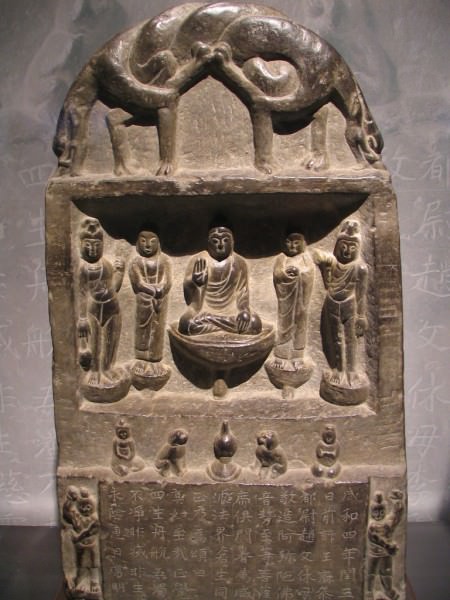
Balhae Stele Depicting Buddha
FOREIGN RELATIONS
Despite the occasional breakout of hostilities, trade links were established with both of Balhae's immediate neighbours and with Japan. Such was the regularity of trade with its southern neighbour that a trade route with 39 stations wound down from Balhae to Silla. Diplomatic missions were sent by Silla in 792 CE and 812 CE. Cultural ties were also strong with China, as they had always been with Korea in general. Balhae exported metals and horses while China sent books and fine manufactured goods in return. Administration, laws, education, literature, and art all followed Chinese lines or displayed a marked influence. In return, Balahe sent students both for study and to enter the exams of the Tang administration. Buddhismwas adopted, as it had been in the earlier Korean kingdoms, and Confucian principles were applied to the state's system of administration.
Japan, though, remained Balhae's staunchest ally with the Japanese sending 13 diplomatic embassies and Balhae 35 in return over the decades. Trade flourished with Japan exporting textiles and Balhae furs, silk, and hemp cloth. The two states plotted to invade Silla with a joint army. The first attack in 733 CE involved a large Japanese fleet but came to nothing, and the planned invasion of 762 never got off the generals' map board.
COLLAPSE
In 926 CE, Balhae came to an abrupt end when it was conquered by the Mongolian Khitans (aka Qidan). Balhae sent a plea for aid from their Japanese allies in 929 CE, but none was offered. The suddenness of the collapse is variously ascribed by scholars to the inherent social split between the elite of Korean descent and the local ethnic tribal masses, by the prolonged period of peace which preceded and perhaps softened the state and military, or even the devastating volcanic eruption of Paektu-san which severely damaged the capital.
After the fall many of the Korean population fled south to Silla, but the Unified Kingdom was itself overrun by what became known as the Goryeo (Kuryo) Dynasty. The latter claimed, as Balhae had done, that they were the true inheritors of ancient Goguryeo of the Three Kingdoms period (1st century BCE to 7th century CE) and proceeded to conquer all of the Korean peninsula, including the southern parts of the old Balhae territories.
This article was made possible with generous support from the British Korean Society.
Beer in Ancient Egypt › Origins
Ancient Civilizations
Considering the value the ancient Egyptians placed on enjoying life, it is no surprise that they are known as the first civilization to perfect the art of brewing beer. The Egyptians were so well known as brewers, in fact, that their fame eclipsed the actual inventors of the process, the Sumerians, even in ancient times. The Greeks, who were not great fans of the drink, wrote of the Egyptian's skill while largely ignoring the Mesopotamians.
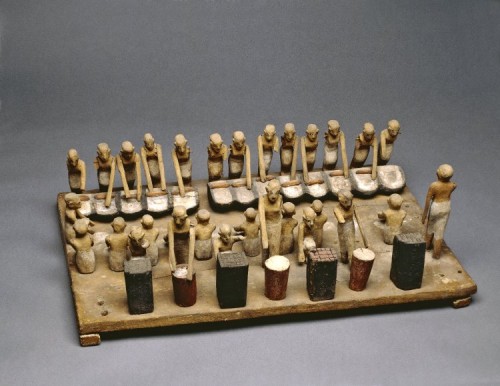
Egyptian Brewery
The Greek general and writer Xenophon (430 - c. 354 BCE), however, gives a critique of the Mesopotamian version he sampled in the region of Armenia in his Anabasis, noting, "the beverage without admixture of water was very strong, and of a delicious flavour to certain palates, but the taste must be acquired" (4.5.27). The Mesopotamian brew in Xenophon's narrative was served in great bowls, and one drank it through a straw to avoid the malt floating on the surface, which was the usual manner of drinking beer in Mesopotamia. The straw, in fact, was invented by the Sumerians specifically for drinking beer.Mesopotamian beer was thick, the consistency of modern porridge, and could not just be sipped.
The Egyptians altered the Sumerian brewing methods to create a smoother, lighter, brew which could be poured into a cup or glass for consumption. Egyptian beer, therefore, is most often cited as the 'first beer' in the world because it has more in common with the modern-day brew than the Mesopotamian recipe, even though few modern-day beer enthusiasts would recognize the ancient brew as their favorite drink.
THE DRINK OF THE GODS
Beer was among the many gifts of the gods granted to humanity in the early days of the world. According to the myth, the god Osiris himself gave humanity the gifts of culture and taught them the art of agriculture; at this same time, he also instructed them in the craft of brewing beer. No actual single story relates this event, however, and the origin of beer in Egypt is often - inaccurately - given as the story known as The Destruction of Mankind. However, this story, which dates from the New Kingdom of Egypt (c. 1570-1069 BCE), makes clear that beer was already known to the gods. No mention is made of the gods creating alcohol in the tale - it is a given that it already exists - they simply find a good use for it.
In The Destruction of Mankind, the great god Ra grows tired of humanity's constant sin and foolishness and decides to destroy everyone on earth. He unleashes Sekhmet to take care of this task for him and seems quite pleased as she rampages from one community to the next, tearing people apart and drinking their blood. The other gods, however, point out to him that if Sekhmet persists, there will be no humans left to offer sacrifices or worship to the gods and, further, none to pass on the lesson Ra's punishment was to teach.
Ra wants to call Sekhmet back, but she is consumed with bloodlust and there seems no way to stop her. Ra, therefore, commands that a large quantity of beer be dyed red and delivered to Dendera, directly in Sekhmet's path. The goddess finds the beer and, thinking it blood, drinks it. She then becomes drunk, falls asleep, and wakes as Hathor, the kind and gentle friend of humanity. The Tekh Festival, one of the most popular in Egypt, commemorated this event.

Statue of a Sitting figure of Goddess Sekhmet
The Tekh Festival was known as 'The Festival of Drunkenness' and was first observed in the Middle Kingdom of Egypt(2040-1782 BCE) but may have had earlier origins. It was most popular during the New Kingdom where the story of Sekhmet's rampage and transformation has been found carved in the tombs of Seti I, Ramesses II, and others. At this festival, which was dedicated to Hathor, participants would drink to excess, fall asleep in a certain hall, and wake suddenly to the beating of drums.
The alcohol would lessen people's inhibitions and critical faculties and allow for a glimpse of the goddess when participants were awakened by the drums. There seems to have also been a sexual side to the festival as, according to Egyptologist Carolyn Graves-Brown, some scenes of the celebration on temple walls "link drunkenness with 'travelling through the marshes', a possible euphemism for sexual activity" (169). This would hardly be surprising since sex was not only considered a natural aspect of human life but was also associated with Hathor and Mut, a fertility goddess who was also closely linked to the festival.
Beer is mentioned as a part of almost every major festival in ancient Egypt and was often supplied by the state, as in the case of the Opet Festival and the Beautiful Feast of the Wadi. The festivals of Bastet, Hathor, and Sekhmet, especially, all involved vast quantities of beer and encouraged drinking to excess. Graves-Brown writes:
While drinking was often discouraged in ancient Egypt, at times it appears to have been celebrated by both sexes. An ancient Egyptian tomb painting shows an elite woman vomiting through overindulgence in alcohol. A woman at a drinking party asks for 18 cups of wine because her throat is a dry as straw. (3)
Although beer was enjoyed at these celebrations, it was certainly not reserved only for special occasions. Beer was a staple of the Egyptian's daily diet as well as a common form of compensation for work and frequently prescribed for one's health.
BEER IN DAILY LIFE
Women were the first brewers in Egypt. Egyptologist Helen Strudwick writes, "both brewing and baking were activities undertaken by women and numerous statuettes found in tombs show women grinding grain in mills or sifting the resulting flour" (408). Beer was first brewed in homes by women and only later became a state-funded industry presided over by men.
The early feminine influence on brewing is perhaps indicated in the deity who presided over the craft: Tenenet (also Tenenit, Tjenenet) the goddess of beer. Like the goddess Ninkasi of the Sumerians, Tenenet watched over brewers and made sure that the recipe was observed for the best quality beer. The Sumerians had the Hymn to Ninkasi, which was basically the recipe for beer sung by brewers so they would memorize it, but no evidence of a similar song has been found in Egypt.
MEN, WOMEN, & CHILDREN ALL DRANK BEER AS IT WAS CONSIDERED A SOURCE OF NUTRITION, NOT JUST AN INTOXICANT.
The ancient Egyptian brewers do not seem to have suffered much from this, however, as their product was immensely popular.The common name for beer was heqet (also given as hecht and henket ) or tenemu (giving the goddess Tenenet her name), but there were also names for specific types of beer. Beer was classified according to alcoholic strength and flavor, with the average beer having an alcohol content of 3-4% while beer used in religious festivals or ceremonies had a higher alcohol content and was considered of better quality.
Men, women, and children all drank beer as it was considered a source of nutrition, not just an intoxicant. Beer was regularly used as compensation for labor (referred to as hemu ) and workers at the Giza plateau, for example, were given beer rations three times a day as payment. Records of payment through beer at various sites throughout Egypt, in fact, provides some of the best evidence that the great monuments were not built by slaves but by paid Egyptian labor.
Beer was also frequently prescribed in medical texts. Over one hundred recipes for medicines included beer, and even when beer was not included in the list of ingredients, it was suggested that a patient take the prescription with a cup of beer which was thought to "gladden the heart." Beer was also thought to confuse the evil spirits which were considered the cause of many diseases. A spell given to cure one unnamed disease directs the person to call upon the god Set who will empower the beer so that the spirits become perplexed and disoriented and will leave the body. Precise recipes for these brews were never written down, but the general method used is fairly clear from both texts and small models of brewers found in tombs.
BREWING & BANQUETS
The best-known examples of these models come from the tomb of Meketre of the early Middle Kingdom. These are small dioramas which detail the brewing process at that time. The models supplement letters, receipts, and other written works in depicting how beer was brewed and by whom. Strudwick notes that "although beer was produced daily in most ancient Egyptian households, there was also large-scale production in breweries for distributing rations to town-dwellers, taverns or 'beer houses', wealthy individuals, and state employees" (410).
Every brewer had her or his own particular specialty, with some brews known for higher alcohol content and others for a certain flavor. According to Strudwick, "the most common kind of beer was a rich, slightly sweet ale, rather like brown ale, but lighter beers similar to a modern lager were created for special occasions" (411). In either case, as in the modern day, brewers followed basically the same procedure.
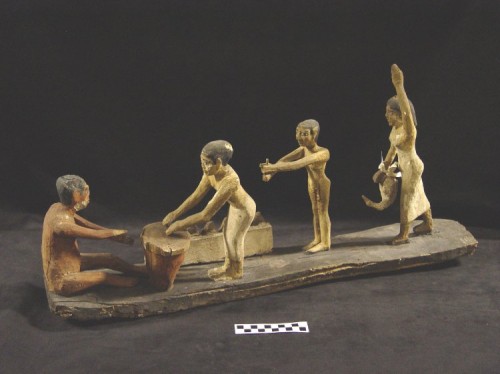
Beer Brewing in Ancient Egypt
At first, around the time of the Old Kingdom of Egypt, beer was brewed by mixing cooked loaves of bread in water and placing the mixture in heated jars to ferment. The use of hops was unknown to the Egyptians as was the process of carbonation. To a modern-day beer drinker, an Egyptian brew would taste more like a fruit drink than the familiar beverage.Dates and honey were added for sugar, taste, and higher alcohol content, and then yeast in order to increase fermentation.This beer was a thick, dark red brew which perhaps suggested the beer originally dyed by Ra to calm and transform Sekhmet.
By the time of the New Kingdom barley and emmer (wheat) were used which were mixed with water to create a mash which was then poured into vats and heated to ferment. This mixture was then strained and different herbs and fruits added for the flavoring of the various types of beer. According to Strudwick, "fermentation of everyday beer took a few days, producing a mixture fairly low in alcohol" and "the outcome was a thick, brothy liquid that had to be filtered through a basket before being drunk" (410). Once strained, the beer was sealed in ceramic jugs and stored, often underground in a process similar to later lagering.
In the New Kingdom, when emmer and barley were used, the use of dates and honey decreased in the production of common beer and were only used for higher quality brews for special occasions. Beer with a high alcohol content was favored for banquets and festivals and, in fact, a party was rated a success depending on the level of the participants' intoxication and the amount of beer consumed. The highest quality beer, of course, was brewed for the king and the nobility and flavored with honey which was associated with the gods. The beer found in the tomb of the pharaoh Tutankhamun, for example, was honey beer similar to the later European mead.
From the Middle Kingdom onwards, beer was increasingly a state-run industry, although people still brewed their own in their homes. This beer continued to be amber in color but not as thick; as shown by residue found in the bottom of vats and also through the beer found in Tutankhamun's tomb and others. Just as beer was considered a staple for Egyptians in life, so was it considered a necessary offering for the dead; beer, therefore, became one of the most common grave goods placed in tombs for those who could afford to part with it. Since beer was was a common form of payment, including jars of the brew in a tomb would be comparable to burying one's paycheck with the deceased.
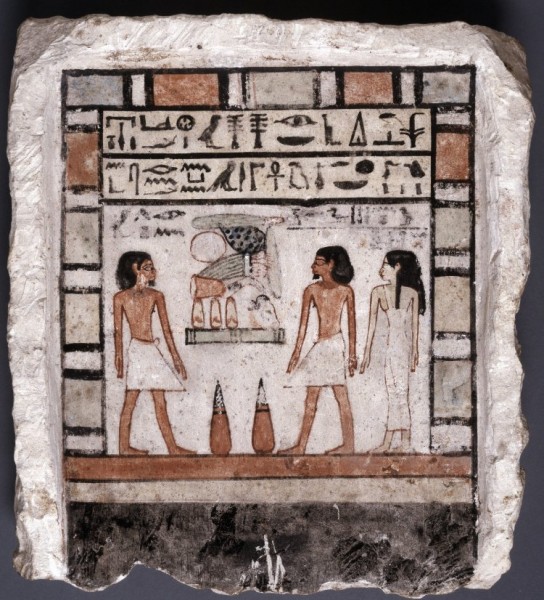
Stela of Renefseneb
Besides the use of beer as part of one's daily meals and at festivals, the drink featured prominently at banquets and funerals.Funerals were a celebration of the life of the departed and also a send-off for the soul on the continued journey into the afterlife. Once the formal ritual of the funeral was concluded, family and guests would gather, often outside the tomb under a tent, for a picnic-banquet at which the food the deceased had enjoyed in life would be served along with a quantity of beer and, sometimes, wine.
Beer was served to guests from pitchers and poured into ceramic cups from which guests drank without the use of straws or strainers. Strudwick notes that "the quality of beer depended on both the skill of the brewer and the sugar content: the more sugar that was added to the fermentation, the stronger the beer" (411). The beer served at funerals would have been higher in alcohol content than a regular brew. The same beer enjoyed by the guests would have earlier been placed in the tomb of the departed.
Just as beer was offered to the souls of the dead, it was considered the best offering to the gods. Temples brewed their own beer which was given to the statue of the god in the inner sanctum to gladden his or her heart just as it did humanity's. Food and drink would be placed before the deity's statue, which contained their spirit, and the nutrients absorbed supernaturally. The meal would then be taken away and given to the temple staff. Osiris had given the people the knowledge of beer, and the people showed their gratitude by offering in return the fruits of that knowledge: beer, the drink of the gods.
LICENSE
Article based on information obtained from these sources:with permission from the Website Ancient History Encyclopedia
Content is available under License Creative Commons: Attribution-NonCommercial-ShareAlike 3.0 Unported. CC-BY-NC-SA License